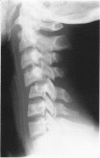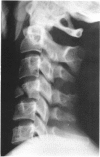Abstract
In reports from the UK and New Zealand, it is noted that the incidence of rugby injuries to the cervical spinal cord has dropped and that the percentage of players injured in the tackle has similarly decreased. In contrast, this does not appear to be the pattern in South Africa and an analysis has therefore been made of 40 rugby players sustaining injuries to the spinal cord during the period 1985 to 1989. The radiological appearances on admission have been correlated with the circumstances of injury, associated orthopaedic injuries and neurological deficits. The tackle was responsible for the majority of injuries, causing more than the scrum. Tackles were also responsible for more cases of complete, permanent quadriplegia than the scrum. The commonest cause of injury in players being tackled was the high tackle around the neck, while the commonest cause of injury in players making the tackle was the dive tackle. This survey has shown that the tackle is now the major cause of spinal cord injury in South African rugby, in contrast to earlier analyses in which the scrum was identified as the most common cause.
Full text
PDF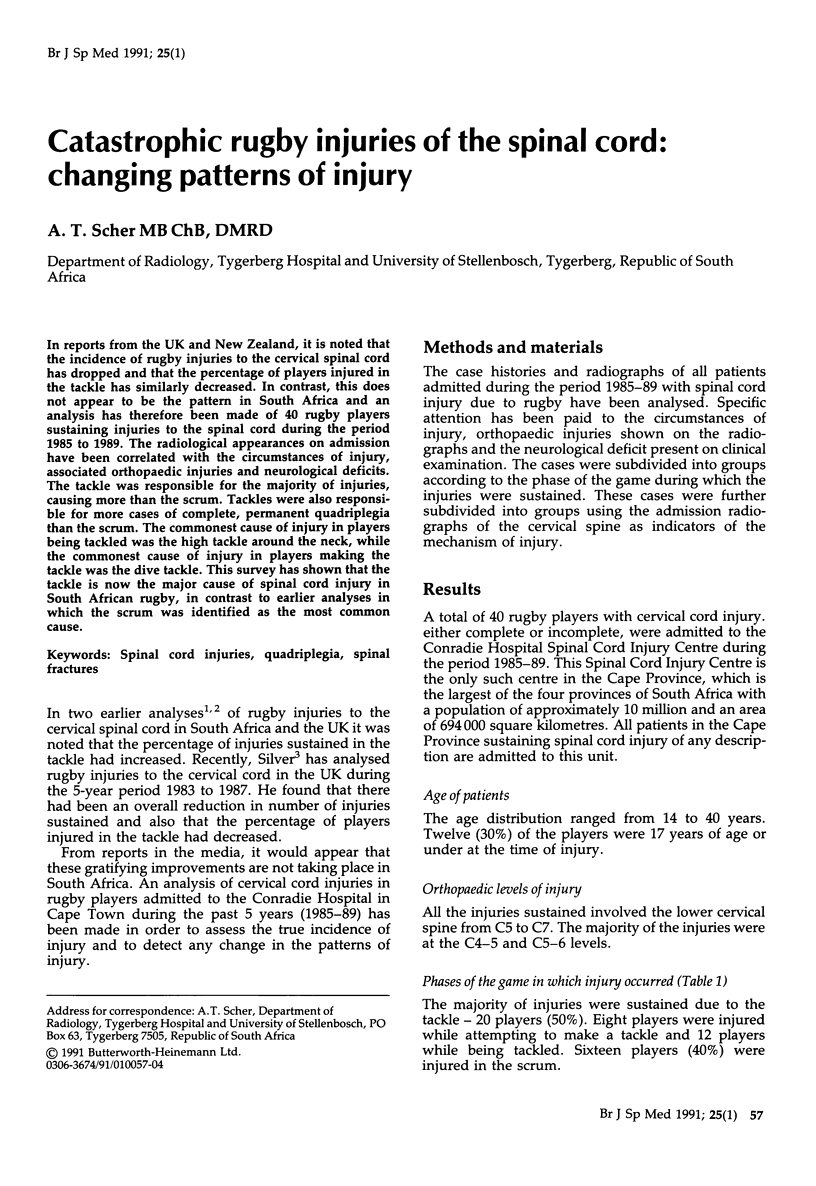

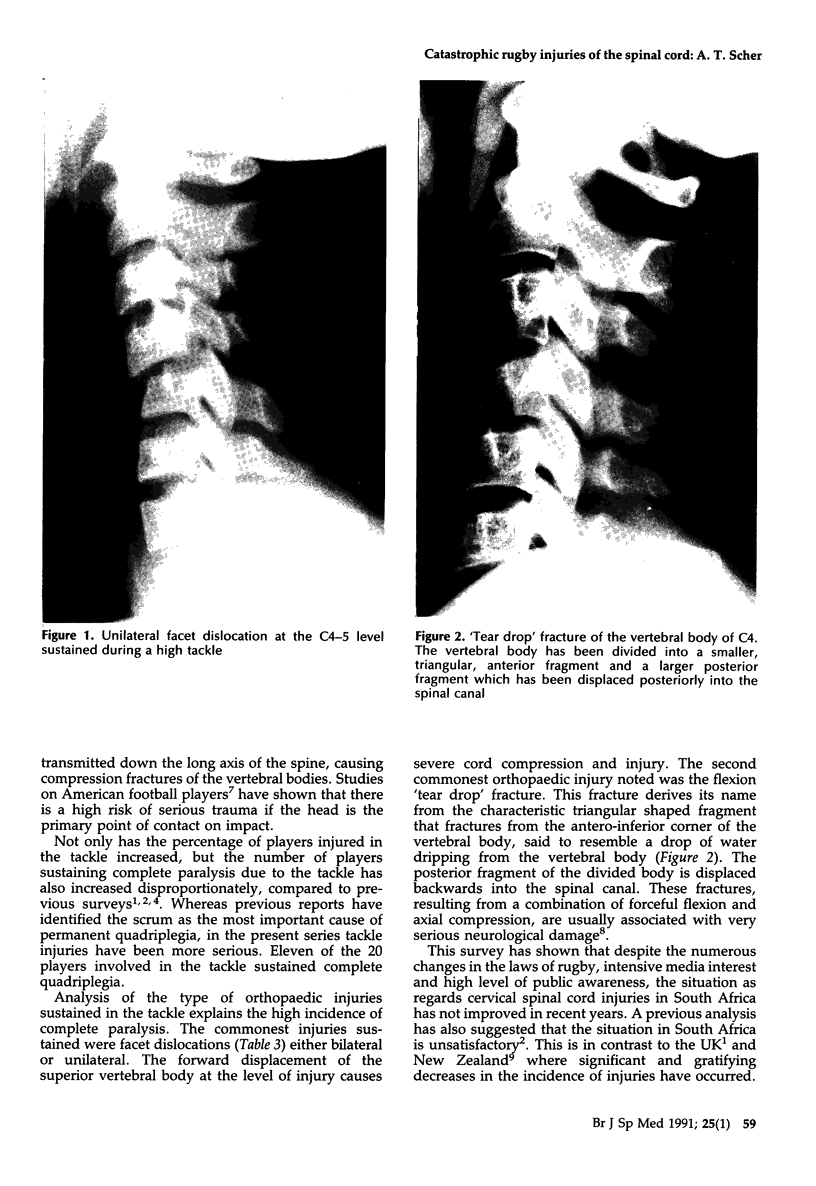
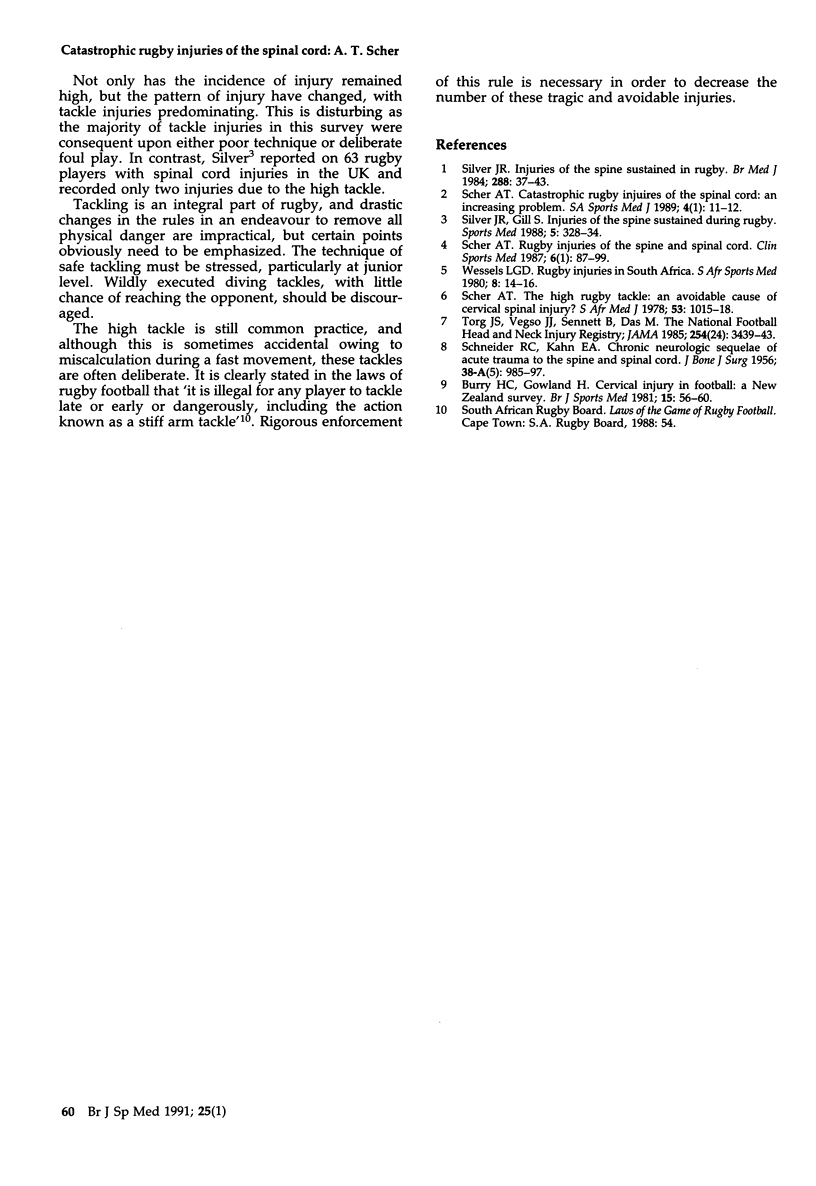
Images in this article
Selected References
These references are in PubMed. This may not be the complete list of references from this article.
- Burry H. C., Gowland H. Cervical injury in rugby football--a New Zealand survey. Br J Sports Med. 1981 Mar;15(1):56–59. doi: 10.1136/bjsm.15.1.56. [DOI] [PMC free article] [PubMed] [Google Scholar]
- KAHN E. A., SCHNEIDER R. C. Chronic neurological sequelae of acute trauma to the spine and spinal cord. I. The significance of the acute-flexion or tear-drop fracture-dislocation of the cervical spine. J Bone Joint Surg Am. 1956 Oct;38-A(5):985–997. [PubMed] [Google Scholar]
- Scher A. T. Rugby injuries of the spine and spinal cord. Clin Sports Med. 1987 Jan;6(1):87–99. [PubMed] [Google Scholar]
- Scher A. T. The high rugby tackle--an avoidable cause of cervical spinal injury? S Afr Med J. 1978 Jun 17;53(25):1015–1018. [PubMed] [Google Scholar]
- Silver J. R., Gill S. Injuries of the spine sustained during rugby. Sports Med. 1988 May;5(5):328–334. doi: 10.2165/00007256-198805050-00005. [DOI] [PubMed] [Google Scholar]
- Silver J. R. Injuries of the spine sustained in rugby. Br Med J (Clin Res Ed) 1984 Jan 7;288(6410):37–43. doi: 10.1136/bmj.288.6410.37. [DOI] [PMC free article] [PubMed] [Google Scholar]
- Torg J. S., Vegso J. J., Sennett B., Das M. The National Football Head and Neck Injury Registry. 14-year report on cervical quadriplegia, 1971 through 1984. JAMA. 1985 Dec 27;254(24):3439–3443. [PubMed] [Google Scholar]



